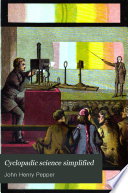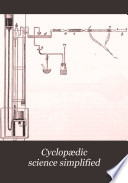 | Auguste de La Rive - 1853 - 630 pages
...to a law which was discovered by Coulomb. It consists in this, that two electrised bodies attract or repel each other with a force which is inversely proportional to the square of the distance that separates them; that is to say, that if the distance becomes half, the force "becomes... | |
 | 1856 - 248 pages
...This, then, is the conclusion up to this point — that all bodies and all parts of bodies attract each other with a force which is inversely proportional to the square of the distance. But this is not all. We have already seen that the attractive power of the sun is greater... | |
 | John Henry Pepper - 1869 - 722 pages
...determined the laws which bear his name. First Law of Coulomb. — Two electrified bodies attract or repel each other with a force which is inversely proportional to the square of the distance th,it separates them. Example : An electrified body at a certain distance exerts a force... | |
 | John Henry Pepper - 1877 - 764 pages
...determined the laws which bear his name. First Law of Coulomb. — Two electrified bodies attract or repel each other with a force which is inversely proportional to the square of the distance that separates them. Example : An electrified body at a certain distance exerts a force... | |
 | Edward Leamington Nichols, William Suddards Franklin - 1899 - 66 pages
...repel (or attract) is (28) The fact expressed by this equation, namely that two charges attract or repel each other with a force which is inversely proportional to the square of the distance between the charges, was discovered by Coulomb and is called Coulomb's Law. When Ql and... | |
 | Edward Leamington Nichols, William Suddards Franklin - 1901 - 322 pages
...they attract each other. The fact expressed by equation (108), namely, that two charges attract or repel each other with a force which is inversely proportional to the square of the distance between them, was discovered experimentally * by Coulomb and is called Coulomb's law of... | |
 | Leigh Page - 1928 - 660 pages
...showed in 1785 that two like electric charges at rest repel each other or two unlike charges attract each other with a force which is inversely proportional to the square of the distance between them. His method consisted in placing one charge on a small conducting sphere... | |
 | Leigh Page - 1928 - 610 pages
...showed in 1785 that two like electric charges at rest repel each other or two unlike charges attract each other with a force which is inversely proportional to the square of the distance between them. His method consisted in placing one charge on a small conducting sphere... | |
 | Roger Muncaster - 1993 - 964 pages
...to the ground. Extending these ideas, Newton proposed that every body in the Universe attracts every other with a force which is inversely proportional to the square of their separation. His next step was to turn his attention to the masses of the bodies involved. According... | |
 | Raymond Aurelius Higgins - 1994 - 514 pages
...Forces The nucleus of an atom consists of a collection of protons and neutrons. Now like-charged bodies repel each other with a force which is inversely proportional to the square of their distance apart (the Coulomb Law). Since protons are positively charged particles why does not... | |
| |